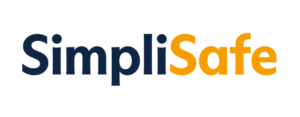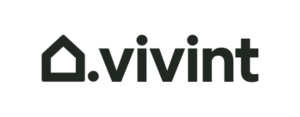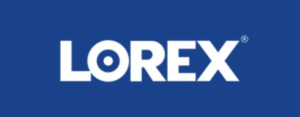Security isn’t just for big companies with deep pockets.
Maybe you’re running a café, managing a warehouse, or keeping tabs on multiple properties—either way, the risks are real.
You don’t need a flashy system; you need one that makes sense. Reliable, simple where it should be, and smart where it counts.
So let’s take a real look at what actually works in 2025.
Comparing Our Top Picks
| Feature | Highline Integrated Security | ADT | SimpliSafe | Vivint | Lorex |
|---|---|---|---|---|---|
| Installation | Professional, in-house technicians | Professional | DIY or professional option | Professional | DIY (or hire third-party installer) |
| Monitoring Options | Custom monitoring or self-managed | 24/7 professional monitoring | Optional professional or self-monitoring | 24/7 professional monitoring | Self-monitoring (no professional option) |
| Contract Requirement | ❌ | ✔️ | ❌ | ✔️ | ❌ |
| Equipment Focus | CCTV, access control, alarms, intercom | Alarms, cameras, environmental monitoring | Entry sensors, cameras, alarms | Smart locks, cameras, vehicle tracking | 4K cameras, AI motion detection |
| Smart Integrations | Full custom integration | Google Nest, smart devices | Google Assistant, Alexa (basic) | Full smart home/business automation | Alexa, Google Assistant (limited) |
| Notable Strengths | Tailored designs, no third-party installers | Reliable nationwide service, lots of options | Budget-friendly, super simple to use | Strong automation, excellent mobile app | 4K video quality, no ongoing costs |
| Biggest Drawbacks | Only available in New York | Contracts, less transparent pricing | Basic features only, lighter-grade hardware | Higher costs, contracts required | DIY setup can be tricky, no professional monitoring |
1. Highline Integrated Security

We looked at a lot of systems. We read the reviews, talked to building managers, even staged a few (controlled) break-in scenarios to see what held up. And yes—full disclosure—Highline is our own system.
But we’re not including it here because it’s ours. We’re including it because when we put it head-to-head with the competition, it held up. Better integration, smarter installs, and setups that actually match how businesses run day to day.
This isn’t a plug-and-play kit from a big box store. We build security systems that are meant to last. Everything’s customized. You get what you need, and nothing you don’t. Whether you’re securing a high-traffic storefront or managing multiple tenants in one building, it just works. Smoothly. Consistently. And without having to deal with five different apps to make sense of it all.
We’re especially strong in New York, but what really stood out is the way our setups are built around how real businesses actually run—not how tech companies think they should run.
Product Specs:
- CCTV systems (analog and IP-based)
- Access control (keypad, keycard, and biometric options)
- Intrusion alarms and motion detection
- Smart intercoms and entry systems
- Integrated dashboard for system management
- Available for small offices up to large commercial facilities
How to Set It Up:
This isn’t DIY—you’ll be working with our team from day one.
We start with an assessment, usually on-site, to understand your building’s layout and security needs. After that, we design and install the full system.
Installation is handled by our own technicians (not third-party contractors), which keeps things smooth. Support continues post-install with a dedicated contact for service and upgrades.
Why It Works for Businesses:
- No guesswork—everything is tailored to your site.
- Integrated systems reduce friction and error.
- Strong local presence in NYC means faster service.
- Built with commercial-grade hardware (not home-grade repackaged as "business-ready").
What We Like:
- Clean, centralized management—great for owners juggling multiple roles.
- Truly custom systems; you're not paying for features you’ll never use.
- Hardware is tough and built to scale.
- Support is direct and responsive—no endless hold music.
What We Don’t Like:
- Only available in New York.
- No self-install option, which could turn off ultra-hands-on owners.
- Cost can be higher upfront compared to off-the-shelf kits—but you get what you pay for.
Cost:
Pricing isn’t one-size-fits-all, because no two buildings, businesses, or layouts are the same. It all depends on the size of the space, the number of access points, and how much gear you need.
But, there are no hidden subscriptions or surprise fees.
2. ADT

ADT is a familiar name, sure—but we didn’t let that give them a free pass.
We pored through user reviews, tested response times, and even ran a few “unauthorized entry drills” after hours to see how their systems actually held up. Turns out, the reputation is earned.
ADT offers a flexible setup that works just as well for a single storefront as it does for a multi-location business. You can start small and scale up, adding features like remote access logs, climate alerts, or cybersecurity tools when you need them.
One of our testers loved being able to check cameras with a voice command while juggling morning prep. It’s those little touches that make a system feel like it’s built for real businesses, not just security showrooms.
Product Specs:
- Intrusion detection systems with door/window sensors and motion detectors
- Access control options, including keycards and mobile credentials
- Video surveillance with high-definition cameras
- Environmental monitoring for smoke, carbon monoxide, and temperature changes
- Integration with smart devices and platforms like Google Nest
How to Set It Up:
ADT provides professional installation services.
After an initial consultation to assess your specific needs, their technicians will install and configure the system. The process is designed to minimize disruption to your business operations. Once set up, you’ll receive training on how to use the system effectively.
Why It Works for Businesses:
- Customizable packages tailored to different business sizes and industries
- 24/7 professional monitoring with rapid response capabilities
- User-friendly interfaces for easy system management
- Strong customer support with nationwide coverage
- Reputation for reliability and experience in the security industry
What We Like:
- Comprehensive security solutions that cover various aspects of business protection
- Flexible options that can grow with your business
- Integration with modern smart devices for enhanced control
- Professional installation ensures the system is set up correctly from the start
What We Don’t Like:
- Long-term contracts may not be ideal for all businesses
- Pricing can be higher compared to some DIY solutions
- Limited transparency in online pricing; requires consultation for exact costs
Cost:
ADT’s pricing varies based on the specific needs of your business.
Typically, professional installation starts at $99, with monthly monitoring fees beginning at $52.99. Equipment costs depend on the selected package and any additional features.
It’s best to contact ADT directly for a personalized quote.
3. SimpliSafe

SimpliSafe gets a lot of attention from small business owners, and after putting it through our usual gauntlet of tests, we get why.
We set it up in under an hour, tested sensors with everything from quick door entries to thrown objects, and monitored how it handled real-time alerts. It didn’t miss a beat.
This isn’t a system trying to impress you with complicated features or futuristic jargon. It’s clean, easy to understand, and more importantly: it just works. For smaller teams or solo operators who don’t have an IT department on standby, that simplicity is gold.
What stood out most in our testing was how well it scaled. Start with a basic setup—motion sensors, entry alerts, indoor cameras—and then build up as your business grows. Add an outdoor cam, link it to your phone, tack on professional monitoring if you need it.
We tested it in cafes, offices, and a warehouse loading bay. In each spot, it adapted. Was it perfect? No. But for the price and ease of use, it’s probably one of the most practical systems out there right now.
Product Specs:
- Wireless sensors: entry, motion, glass-break, smoke, water, temperature
- HD indoor and outdoor cameras with optional live monitoring
- Keypad, panic button, and siren options
- Mobile app for remote control and alerts
- Supports up to 100 devices per system
- Optional integration with Google Assistant and Alexa
How to Set It Up:
SimpliSafe is designed for DIY installation. Most users can set up the system in under an hour, placing sensors and devices where needed without drilling or wiring.
The base station connects to your Wi-Fi or cellular network, and the mobile app guides you through the process. For those who prefer assistance, professional installation is available for an additional fee.
Why It Works for Businesses:
- Cost-effective solution for small to medium-sized businesses
- Flexible monitoring options: self-monitoring or professional monitoring
- No long-term contracts; pay month-to-month
- Scalable system that grows with your business
- User-friendly interface for easy management
What We Like:
- Affordable entry point with customizable packages
- Quick and easy installation process
- Reliable performance with essential security features
- Transparent pricing with no hidden fees
What We Don’t Like:
- Limited advanced features compared to higher-end systems
- Equipment may feel less robust than commercial-grade alternatives
- Integration with third-party smart devices is limited
Cost:
SimpliSafe offers various packages starting around $250 for basic setups. Monitoring plans range from $21.99 to $79.99 per month, depending on the level of service and features desired.
There are no contracts, allowing businesses to adjust or cancel services as needed.
4. Vivint

Vivint was one of the systems we were honestly skeptical about.
It’s easy to get distracted by shiny tech features and promises of “smart everything.” So we took it apart—figuratively and literally. After running full workday simulations, testing alarms with staged breaches, and even trying to sneak past motion zones, Vivint proved it’s not just bells and whistles.
Their system feels built for businesses that are moving fast—ones that need doors to lock themselves after hours, cameras to react in real time, and alerts to hit your phone before a problem gets out of hand.
The Car Guard feature especially caught our attention during testing. A bumped delivery van in a back lot? The system picked it up immediately and sent an alert before anyone could drive off.
It’s smart where it counts, not just where it looks good on a spec sheet. Setup isn’t cheap, but if you run a growing operation and need everything working together without a hitch, Vivint earns its spot.
Product Specs:
- Smart Hub Control Panel: Centralized system management with touchscreen interface.
- Indoor and Outdoor Cameras: HD video, night vision, and AI-powered Smart Deter technology.
- Motion and Entry Sensors: Real-time alerts for unauthorized access.
- Smart Locks and Thermostats: Remote control and automation capabilities.
- Car Guard: Vehicle monitoring with GPS tracking and disturbance alerts.
- Mobile App: Full system control from anywhere.
How to Set It Up:
Vivint requires professional installation.
After an initial consultation to assess your business needs, a certified technician will install and configure the system. They’ll ensure all components are working seamlessly and provide training on how to use the system effectively.
The process is designed to be thorough, minimizing disruption to your operations.
Why It Works for Businesses:
- Comprehensive Coverage: Protects both physical premises and vehicles.
- Advanced Automation: Streamlines operations with smart device integration.
- 24/7 Monitoring: Professional monitoring ensures rapid response to incidents.
- Scalability: Suitable for various business sizes and types.
- User-Friendly Interface: Easy to manage, even for non-technical staff.
What We Like:
- High-quality equipment with advanced features.
- Smart Deter technology proactively deters potential threats.
- Car Guard adds an extra layer of security for business vehicles.
- Professional installation ensures optimal setup.
What We Don’t Like:
- Higher upfront costs compared to some competitors.
- Long-term contracts may be required.
- Limited pricing transparency; custom quotes are necessary.
Cost:
Vivint’s pricing varies based on the specific needs of your business. Equipment packages typically start at around $599, with monthly monitoring fees beginning at $39.99.
Additional features, such as video support and Car Guard, may increase costs. It’s best to contact Vivint directly for a personalized quote tailored to your business requirements.
5. Lorex

Lorex isn’t trying to be everything to everyone, and that’s exactly why it works.
We tested their systems across a variety of business environments: retail spaces, office buildings, and even outdoor lots. The consistent thread is that it has Crystal-clear footage, robust hardware, and no need for monthly subscriptions.
Their 4K cameras delivered sharp images, even in low-light conditions, and the AI-driven motion detection minimized false alerts. The absence of mandatory cloud storage fees is a significant advantage, allowing businesses to store footage locally without ongoing costs.
Installation requires some technical know-how, especially for wired setups, but the trade-off is a system that’s reliable and tailored to your specific needs.
For businesses prioritizing high-quality video surveillance without the frills, Lorex stands out as a solid choice.
Product Specs:
- Camera Types: Dome, bullet, PTZ, and wireless options
- Resolution: Up to 4K Ultra HD
- Field of View: Up to 180° with dual-lens models
- Storage: Local storage via DVR/NVR; optional cloud storage
- Smart Features: AI-based motion detection, color night vision, two-way audio
- Integration: Integration
How to Set It Up:
Lorex systems are primarily DIY installations. The process involves mounting cameras, running cables (for wired systems), and configuring the NVR or DVR.
While the setup can be straightforward for those with technical experience, businesses may opt to hire a professional installer to ensure optimal placement and configuration.
Why It Works for Businesses:
- High-resolution cameras provide clear footage for detailed monitoring.
- Local storage options eliminate the need for recurring cloud storage fees.
- A wide range of camera types and features to suit various business needs.
- Scalable systems that can grow with your business.
What We Like:
- Exceptional video quality with 4K resolution options.
- Exceptional video quality with 4K resolution options.
- Robust hardware designed for commercial use.
- Advanced features like AI motion detection and color night vision.
What We Don’t Like:
- DIY installation can be challenging without technical expertise.
- Lack of professional monitoring services.
- Customer support is limited to specific hours.
Cost:
Lorex offers a range of pricing options depending on the system’s complexity and features.
Basic camera units start at around $50, while comprehensive multi-camera systems with NVRs can range from $300 to over $1,000.
Since Lorex systems are primarily DIY, there are no installation fees unless you hire a third-party installer.
Additionally, the absence of mandatory monthly fees for storage or monitoring makes Lorex a cost-effective solution for businesses seeking high-quality surveillance without ongoing expenses.
What to Avoid When Choosing a Business Security System
One-Size-Fits-All Packages
If a company tries to sell you a “standard business package” without asking about your layout, access points, or hours of operation, that’s a red flag.
Your security should fit your business—not the other way around.
Long-Term Contracts Without Flexibility
Signing a 3 or 5 year contract might seem fine today, but if your business grows, moves, or changes focus, you could be stuck with the wrong system.
Look for providers who offer flexibility or easy upgrades.
Overpaying for Features You’ll Never Use
It’s easy to get upsold on fancy features like facial recognition or custom lighting setups. Cool? Maybe. Necessary? Probably not for most businesses.
Pay for what actually protects your assets and people.
DIY Systems Without Proper Backup
DIY can work for small setups, but if there’s no professional monitoring or backup power, you’re gambling with your security. Know what you’re giving up before you skip professional options.
Ignoring Customer Support Reviews
Plenty of systems look good on paper, but if something goes wrong and you can’t reach a real human, you’re on your own.
Always check how responsive a company’s support team actually is before buying.
Poor Camera Placement
Even a great camera won’t help if it’s pointed at the wrong spot. Missing key entry points, blind spots, or important interior areas can leave major gaps. Work with pros or plan your layout carefully.
Want Security That Actually Fits Your Business?
Frequently Asked Questions
How often should a business security system be updated or upgraded?
Most businesses should review their security system every 3 to 5 years. Technology changes fast—new camera resolutions, smarter sensors, and better software integrations can make a big difference. Plus, regular updates ensure you’re not leaving gaps open for newer threats like cyber-hacking of smart devices.
Can business security systems help with insurance premiums?
Yes. Many insurers offer discounts if your business has a professionally installed, actively monitored security system. Some will require proof like a certificate of installation or monitoring agreement, but it can lead to significant savings on your property or liability insurance.
What happens if the power goes out—will the system still work?
Most professional-grade business security systems (including all the ones we reviewed) come with battery backup units. If the power cuts, the essential sensors, alarms, and recording equipment can keep running for several hours—long enough to ride out typical outages or switch to generator power if needed.
Can a security system be installed without internet access?
Yes, but with limits. Hardwired systems like Lorex can record locally to DVR/NVR without internet, but you’ll lose remote access features like mobile alerts or live feeds. Internet access opens up cloud backups, smart alerts, and real-time control—which most businesses find important once they have it.
Are business security systems easy to expand if my business grows?
Systems like SimpliSafe, Highline, and ADT are designed with scalability in mind. You can add more cameras, extra door sensors, smart locks, or even new facility zones as your operation expands—without needing to rip out the old system. Planning ahead by choosing expandable equipment saves time and money later.
Conclusion
The best business security system isn’t just about cameras and alarms—it’s about control, reliability, and fit.
Highline Integrated Security stands out for NY businesses that want fully tailored setups and fast local support. ADT and SimpliSafe offer more flexible entry points, depending on your size and budget. Vivint and Lorex bring advanced features to the table for owners who want a little extra.
No two businesses are exactly alike. That’s why choosing the right system means understanding what matters most to you—and building from there.
If you want a system that’s built around your business, not squeezed into a template, book a free consultation. Let’s get you protected the right way.

!["Close-up of white security cameras and accessories on a dark background with the text '5 Best Business Security Systems [2025]' overlaid in blue."](https://nyhls.com/wp-content/uploads/2025/05/access-control-system-min.png)